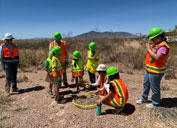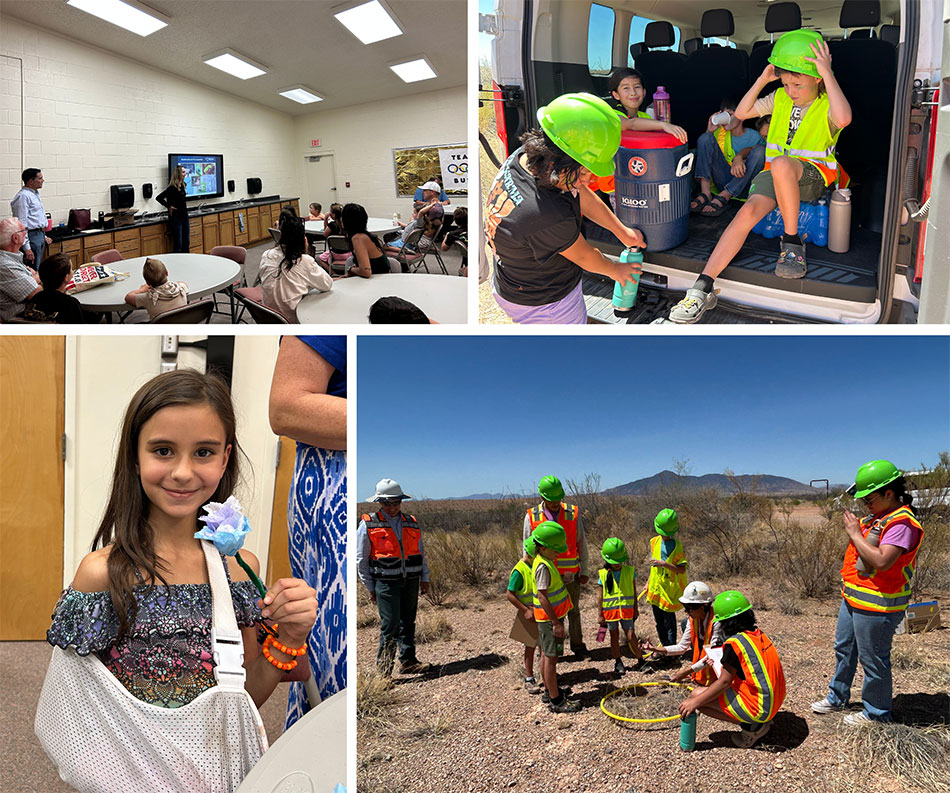Around the Company in Pictures: Bisbee Mine Opens for Summer Youth Program

August 8, 2025 - This summer, the gates of Freeport’s Bisbee operation reopened – not to explore new deposits, but to spark curiosity in the next generation through a series of educational events with the Boys & Girls Club of Bisbee and the Copper Queen Library.
In the kickoff event, a group of kids – guided by Freeport employees – stepped into the role of scientists for a day, exploring the now-closed mine and collecting real-world data on vegetation, erosion and other key aspects of mine reclamation.
At a separate event, children and their parents met at the library for a pollinator program, where they learned about the various types of pollinators, how pollination happens and its importance to the environment.
These events support Freeport’s sustainability goals – from education and workforce development to environmental stewardship – while helping a new generation understand the mine’s importance and the company’s continued role in Bisbee.
“Open mines mean open minds,” said Rita Lloyd-Mills, Social Performance Manager-Discontinued and Downstream Operations. “This kind of engagement matters, because when kids understand what we do here, they grow into adults that see us as a part of the community and not just a company. It is about creating new partners so that we can continue to work together to build a resilient future for Bisbee and our other operating communities.”

Photos (clockwise from top left): At the Copper Queen Library, Freeport employees taught kids about the vital role of pollinators; mine visitors stayed safe and cool with plenty of water and shade; participants learned how to conduct a vegetation survey during their site visit; and to wrap up the pollinator lesson, children handcrafted flowers – a key part of the pollination process.



 BACK
BACK
SOCIAL
RECOGNITION